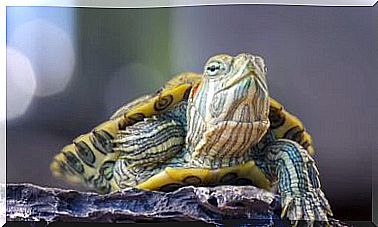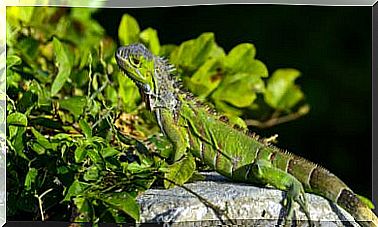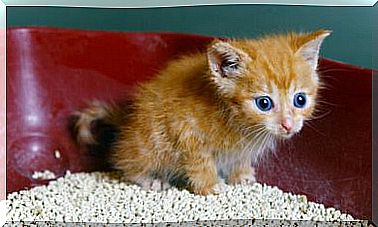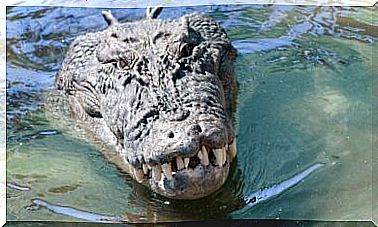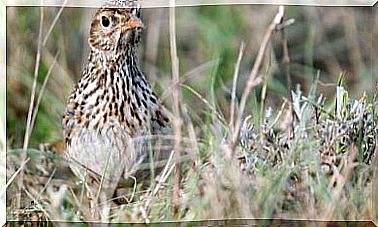Dendrobates Frogs: Classification And Habitat
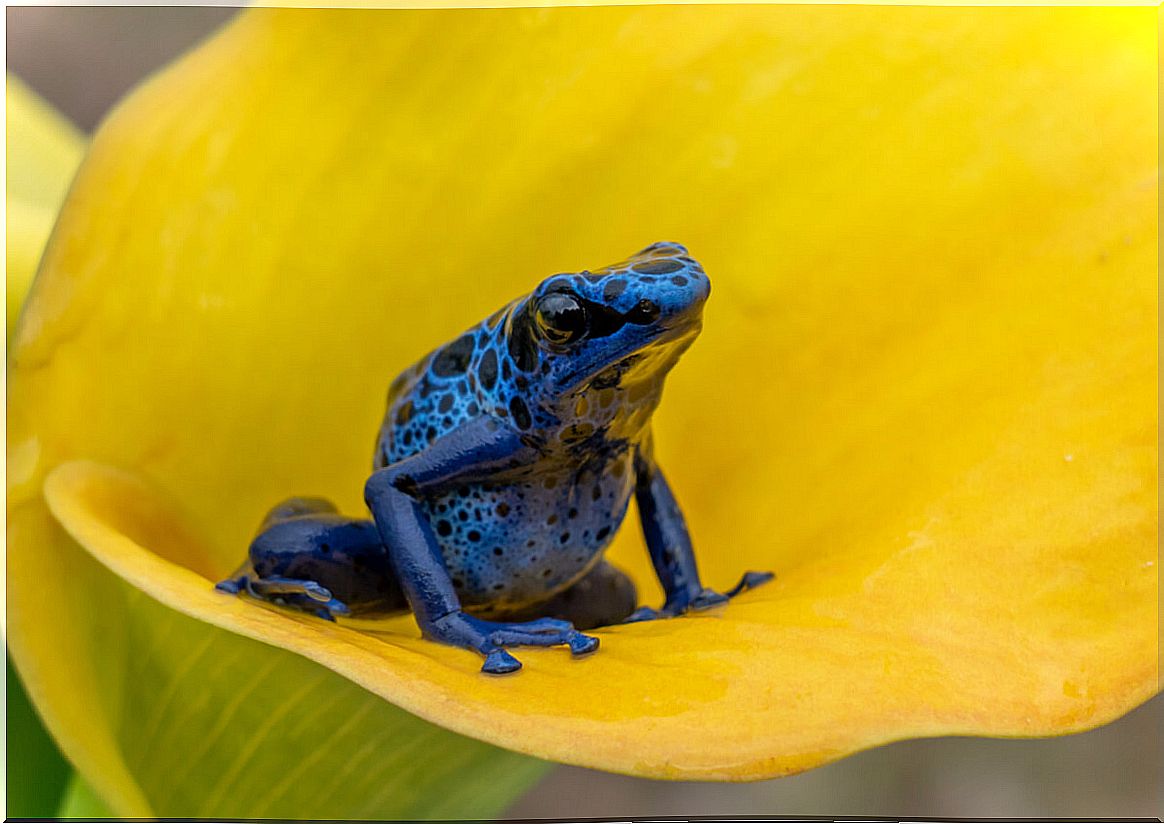
Dendrobat frogs are a genus of amphibians that belongs to the dendrobatid family ( Dendrobatidae ). According to experts, four to seven genera are recognized in this family and fewer than 200 species.
We are facing some colorful frogs with a dominant presence in neotropical jungle areas. Their colors, small size and gracefulness have fascinated humans for many years, which is why these species have been bred in captivity and form an important part of the percentage of exotic pets in the homes of the most adventurous.
Where do frogs of the genus dendrobates live?
Dendrobatids are amphibians that are endemic to the soil of tropical forests in Central and South America. These frogs prefer locations near small streams, as the tadpoles develop in pockets of water until metamorphosis.
Thus, these striking species can be found from Nicaragua and Costa Rica to southeastern Brazil and Bolivia, with the greatest diversity in northwestern South America: Colombia, Venezuela, and the Guianas. They are also known to have been introduced to Hawaii by humans, where they have successfully adapted.
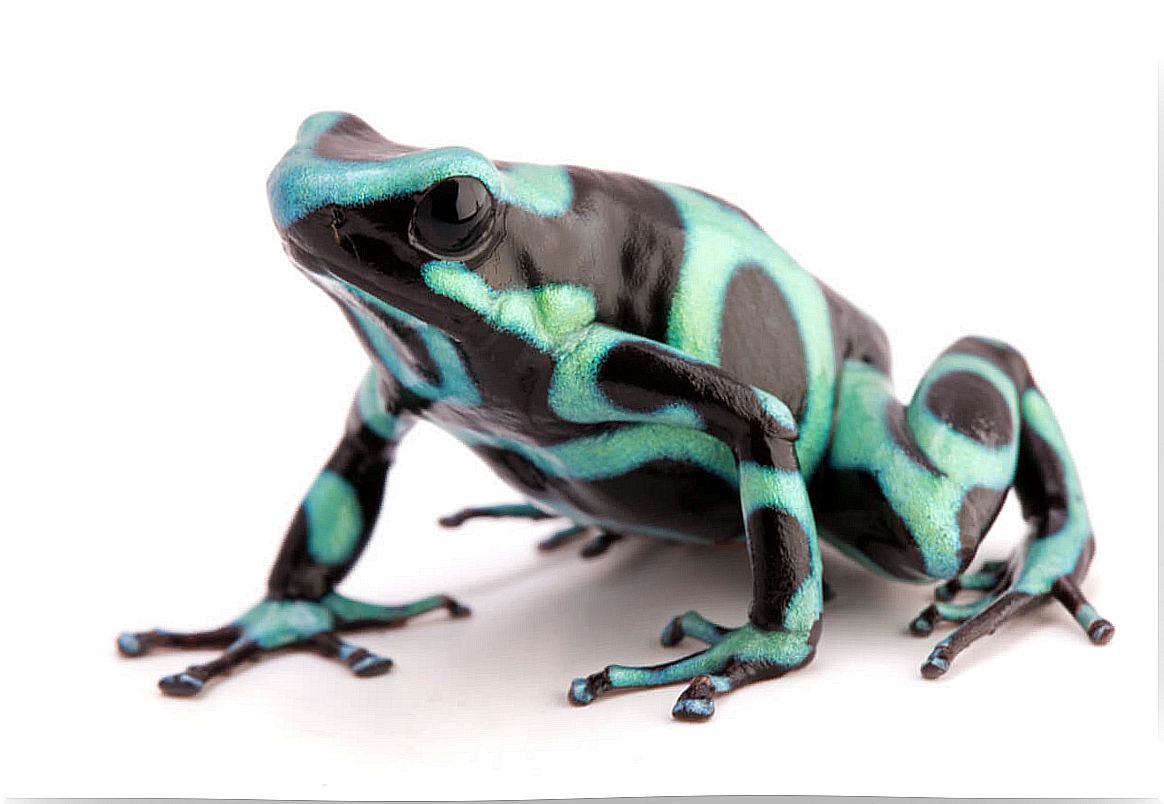
Dendrobates are famous for their aposematism
It is interesting to know that animals that develop a chemical defense strategy to combat their predators generally have conspicuous coloration and patterns. This mechanism is known as aposematism: the showiness of the prey warns predators of its toxicity, bad taste or other defense system.
As a result, potential predators – who share their habitat – learn to recognize and prevent contact with these dangerous or unpalatable prey. Furthermore, although avoidance is generally a learned response based on previous experiences, in some cases prey avoidance appears as an innate response.
Thus, bright colors are believed to warn predators with color vision. On the other hand, the boldly contrasting patterns would be intended to scare away predators who lack color vision, although this has not been proven.
What has been proven?
What has recently been discovered experimentally is that domestic chickens could learn to associate and avoid strikingly colored frogs of certain species of dendrobates. These findings suggest that the coloration may function as an aposematic signal for natural predators.
The hypothesis that conspicuous coloration in dendrobates functions as an aposematic signal in nature has also been experimentally verified. For this, a field predation experiment was proposed, based on the use of replicas of plasticine models of a red dendrobatid frog and the brown litter frog of the genus Craugastor .
The study found a reduced number of attacks – a measure of predator avoidance – on red patterns compared to brown patterns on other leaf litter frogs.
Toxicity of dendrobates frogs
Dendrobatids are small amphibians of two to four centimeters. Furthermore, almost all species in this genus are diurnal. Due to their high exposure and defenselessness against predators, these limited-sized frogs have had to develop atypical defense strategies.
Therefore, they are capable of producing skin toxins – lipophilic alkaloid compounds – which, if ingested, can easily kill a human being in some cases. To date, approximately 90 alkaloids have been identified from all species of dendrobates.
In particular, these frogs eat ants that have large amounts of alkaloids in their tissues. Thus, experts think that frogs can accumulate these compounds on their skin, which is what makes them poisonous.
Consistent with this hypothesis, individuals of dendrobates kept in captivity and fed an insect diet without alkaloids lose their toxicity.
Live without fear
The combination of aposematic coloration and diurnal habit has allowed members of most dendrobatid species to group in the open. Thus, these frogs practice complex forms of sociality, territoriality, courtship, and parental care that have evolved in many of these species.
It is interesting to know that there are at least two species of non-poisonous frogs ( Eleutherodactylus gaigei and Lithodytes lineatus ) that mimic the coloration of poisonous dart frogs, a behavior known as Batesian mimicry.
The taxonomic classification of dendrobates
The classification of these frogs based on morphological characteristics takes into account traits such as the number of vertebrae, the structure of the shoulder girdle and the morphology of the tadpole stage. While this classification is widely accepted, the relationships between frog genera and families are still debated.
Due to the many morphological characteristics that separate frogs, there are several different systems for classifying the suborders of these anurans. Gradually, molecular genetic studies provide more information on the evolutionary relationships between families of frogs.
Currently, the dendrobatid family is made up of three subfamilies: Colostethinae (67 species), Dendrobatinae, with 56 species in total, 5 of them from the genus dendrobates and Hyloxalinae (59 species).

Possible medical applications
Currently, the therapeutic potential of components of frog venom is being explored. Specifically, progress has been made in the development of an analgesic, ABT-594, from a compound called epibatidine, which is found in D. auratus .
According to preliminary tests, the compound is 200 times more potent than morphine in blocking pain in experimental animals. As we can see, even the most bizarre animal adaptations can be useful for humans if they are applied properly.
